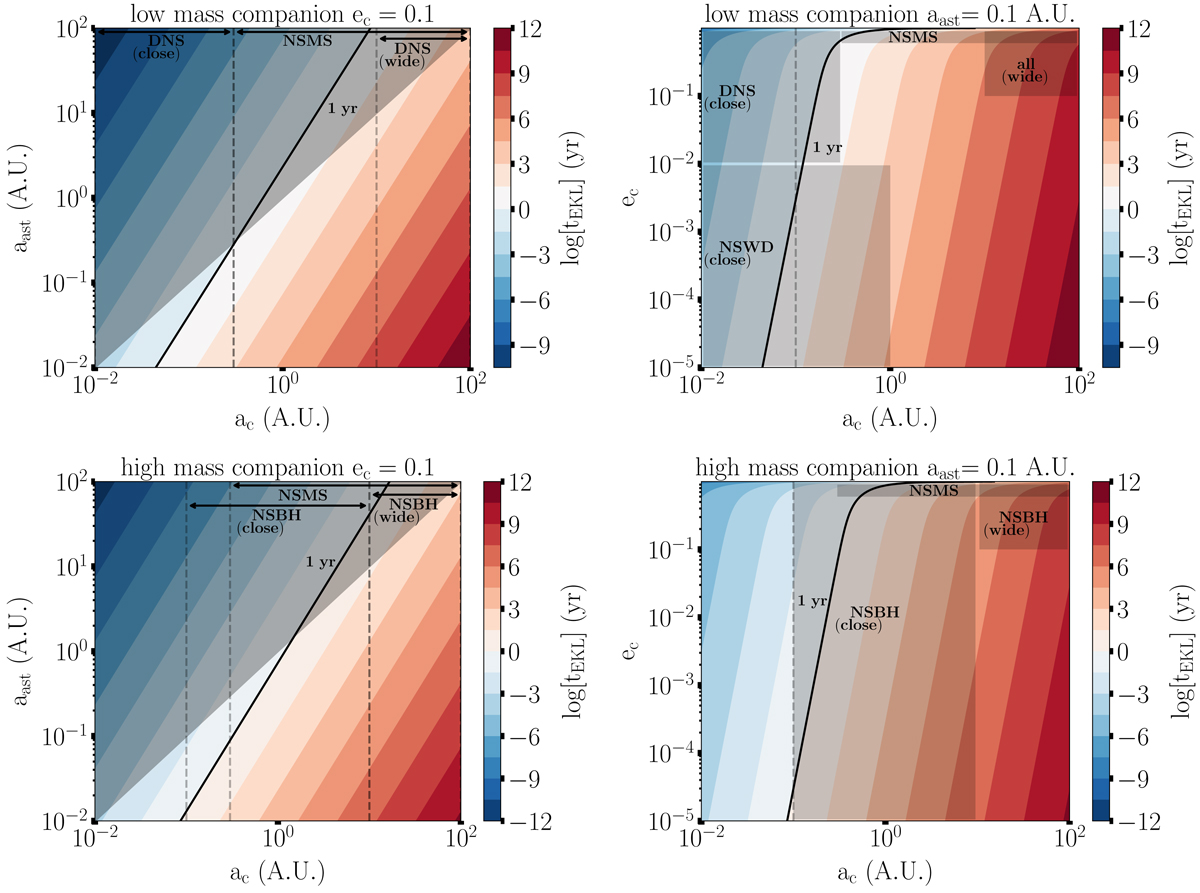Fig. 3.

Evolution of the EKM timescale (given by Eq. (13)) for various configurations of three-body systems, as a function of the semi-major axis, for a companion eccentricity ec = 0.1 (left), and outer binary eccentricity and semi-major axis, for an asteroid belt located at aast = 1 AU (right), for a low mass companion Mc = 1 M⊙ corresponding to DNS, NSMS and NSWD systems (top), and a high mass companion Mc = 10 M⊙ corresponding to NSMS and NSBH systems (bottom). The shadowed region on the left panels represents the forbidden configurations where the outer binary is closer than the inner binary. On the right panels, these forbidden configuration lies on the left-hand side of the vertical dashed line. The gray boxes on the right panels represent the parameters spaces where the different systems considered here are expected to lie. The solid lines show the limit where the timescale is shorter than one year (leading to transient events). On the left panels, the gray thin horizontal dashed lines and the arrows indicate the parameter-space in which the different systems would lie (Table 1).
Current usage metrics show cumulative count of Article Views (full-text article views including HTML views, PDF and ePub downloads, according to the available data) and Abstracts Views on Vision4Press platform.
Data correspond to usage on the plateform after 2015. The current usage metrics is available 48-96 hours after online publication and is updated daily on week days.
Initial download of the metrics may take a while.


